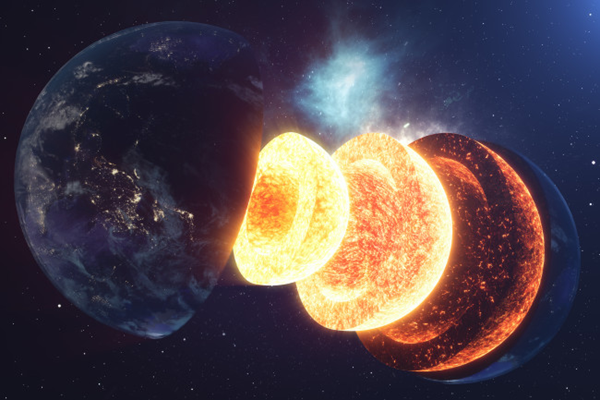Have you ever wondered what lies beneath the surface of the earth? The most intriguing part is the inner core, which sits about 3,200 miles below the crust. This solid core is made up mostly of iron and nickel and contains about one-third of Earth’s mass. It’s also quite mysterious; we don’t know a lot about it because seismic waves from earthquakes have only been able to penetrate so deep. Recently, however, researchers from Peking University published their findings in Nature Geoscience that shed some light on this hidden region. Let’s take a closer look at Earth’s inner core.
The inner core has two components – a solid center with a radius of 1,500 miles and an outer region with a radius of 2,200 miles. This outer region consists mostly of iron and nickel but also contains lighter elements such as oxygen, sulfur, silicon, and magnesium. It is believed that the temperature inside this layer is between 5400 to 5700 degrees Fahrenheit! That’s hotter than the surface of the sun!
Although we don’t yet know everything about Earth’s inner core composition or structure, there are some things that we do know for sure. Firstly, seismic studies show that its density increases toward its center due to strong pressure at greater depths – up to 3 million times atmospheric pressure! Secondly, scientists believe that the inner core has low electrical conductivity due to its high temperature and pressure creating conditions where electrons can’t move freely through the material (like they do in metals). Finally, they believe that there may be small pockets of liquid iron alloy within the inner core caused by intense heat melting certain regions temporarily (but not enough to make it fully liquid).
Earth’s inner core is an incredibly fascinating place – one full of mystery and potential answers as to how our planet formed and evolved over time. Through studying seismic waves from earthquakes over time, researchers have been able to learn more about its composition and structure but there’s still so much left to discover! With new technology available today, who knows what else may be revealed about this hidden world beneath us? Whatever lies ahead for our understanding of Earth’s inner core will no doubt provide us with plenty more exciting insights into our planet’s evolution!











